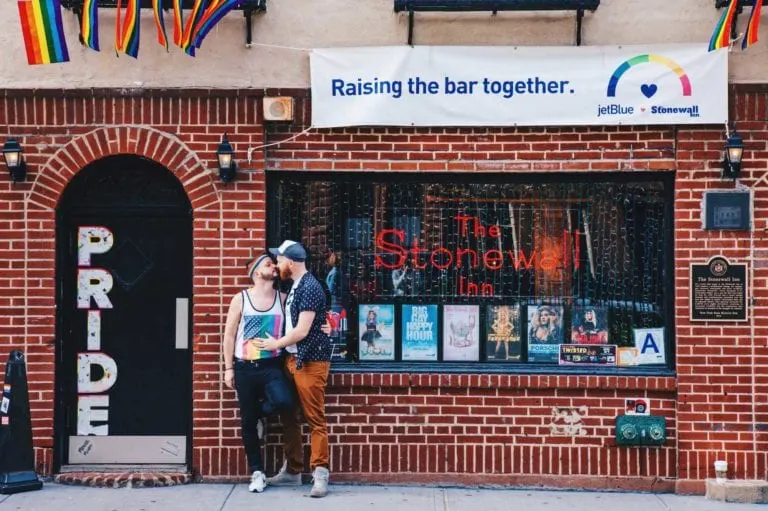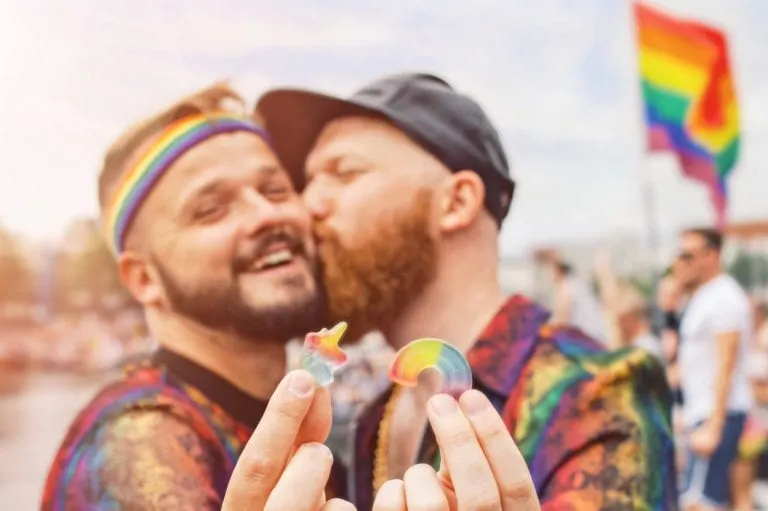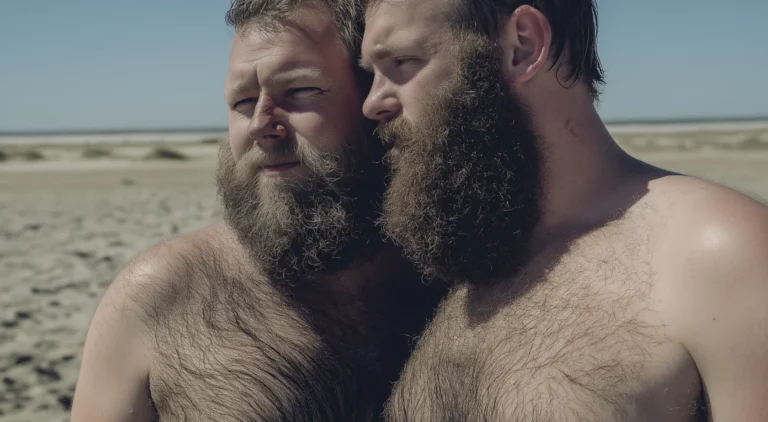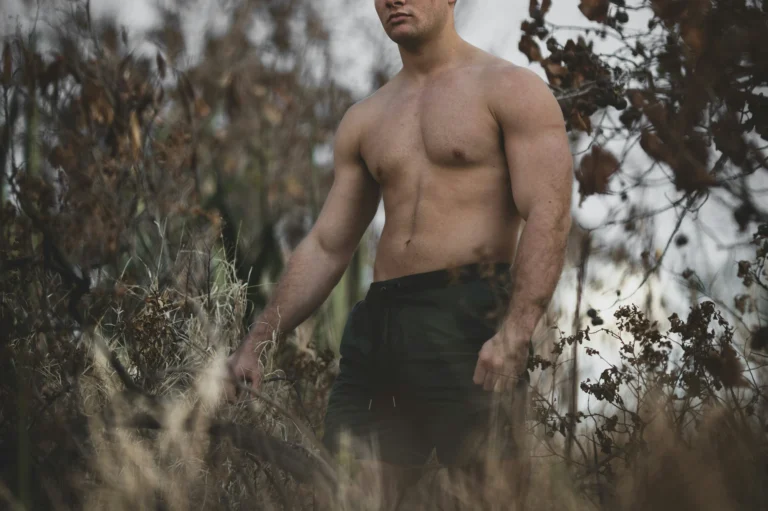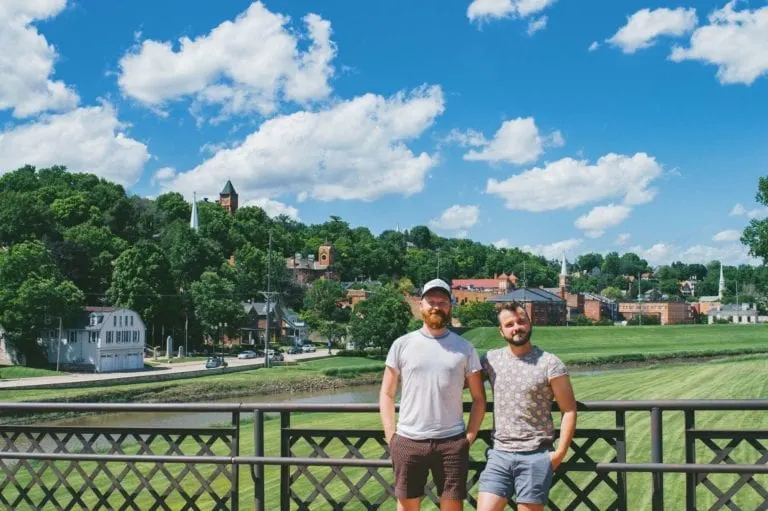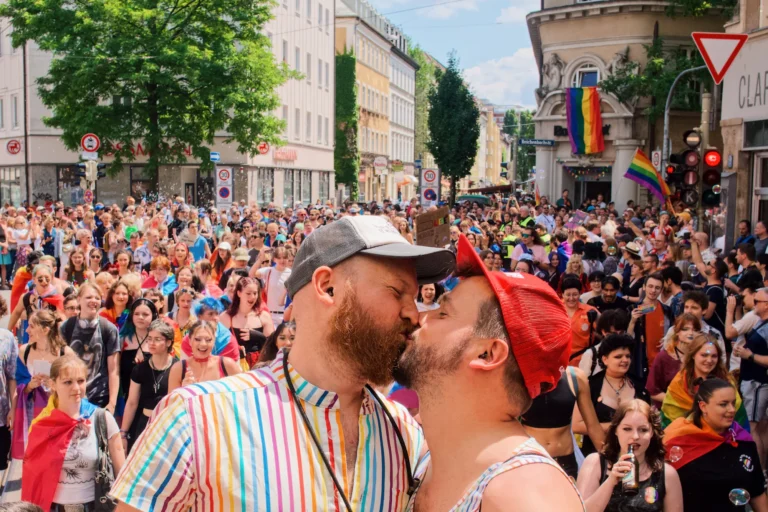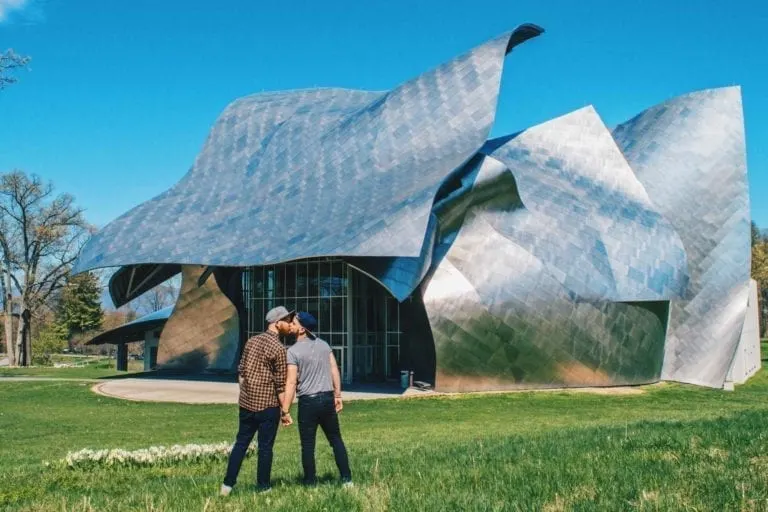LGBTQ+ Monuments play a vital role in preserving history, especially for communities whose stories have often been silenced. As a Dutch-German gay couple traveling the world, we’ve made it a point to seek out and document these sites, not just for their historic significance. These monuments are emotional and powerful reminders of how far the LGBTQ+ community has come and how much further we still need to go. In this article, we, as gay travel bloggers, present thirteen meaningful LGBTQ+ monuments from around the globe, each highlighting queer resilience, loss, love, and pride. Perfect for your cultural gay travel itinerary, these memorials invite us all to reflect, remember, and connect.

LGBTQ+ Memorials: Our Top 13 Queer Monuments
Discover the world’s most remarkable LGBTQ+ monuments, where history, resilience, and pride converge. These 13 iconic landmarks stand as testaments to the LGBTQ+ community’s struggles, triumphs, and ongoing fight for equality. Each monument holds a unique significance, representing diverse cultures and narratives from around the globe. Join us on a journey through these extraordinary monuments of the queer community where stories of courage, love, and solidarity are etched into stone, inspiring generations to embrace diversity and celebrate the vibrant tapestry of human identity.
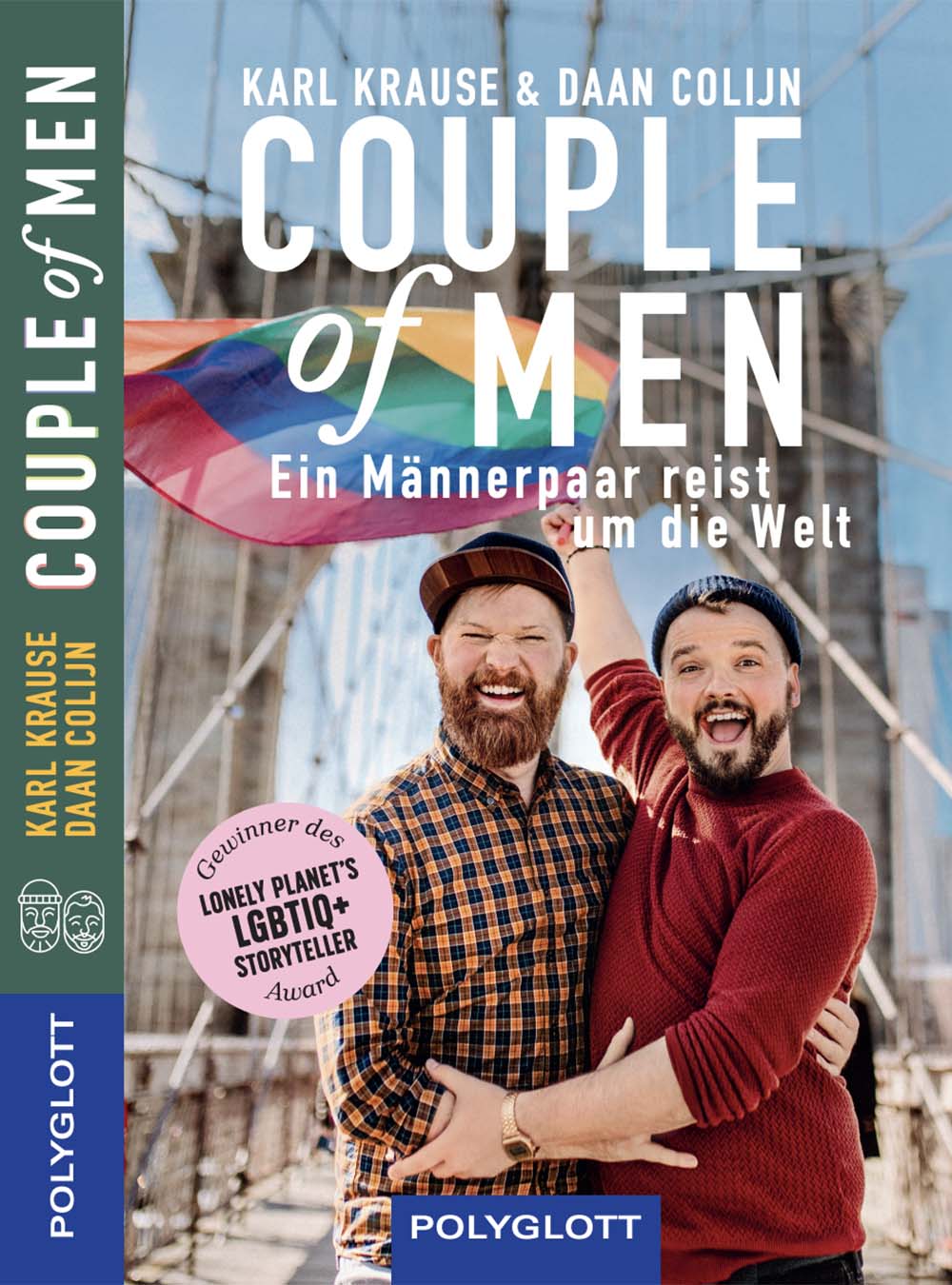
Advertisement
Order our book now!
The perfect present to inspire (German-speaking) LGBTQ+ travelers and their allies to travel the world open-minded, respectfully, and with a happy heart.
Order our book online or purchase it in bookstores in Germany, Austria, and Switzerland.
#1 Stonewall National Monument – New York City, USA
38-64 Christopher St, New York, NY 10014, USA
Located in New York City’s Greenwich Village, the Stonewall National Monument commemorates the 1969 Stonewall Riots, a pivotal moment in global LGBTQ+ history. It marks the beginning of the modern LGBTQ+ rights movement and stands as the first national U.S. monument dedicated to queer rights. Surrounding the memorial, Christopher Park features statues and plaques honoring those who sparked the uprising.
Every time we visit, especially during Pride Month, the energy is profound. We’ve stood in that park among queer youth, seasoned activists, and allies from around the world. It’s an emotional reminder that change can start with resistance in the face of injustice.
The monument is not just a tourist site; it’s a living space of remembrance, activism, and community. We recommend combining your visit with a walking tour of the surrounding neighborhood, including the nearby Stonewall Inn. Whether you’re new to LGBTQ+ history or a seasoned advocate, standing on this ground is a moment of reverence.
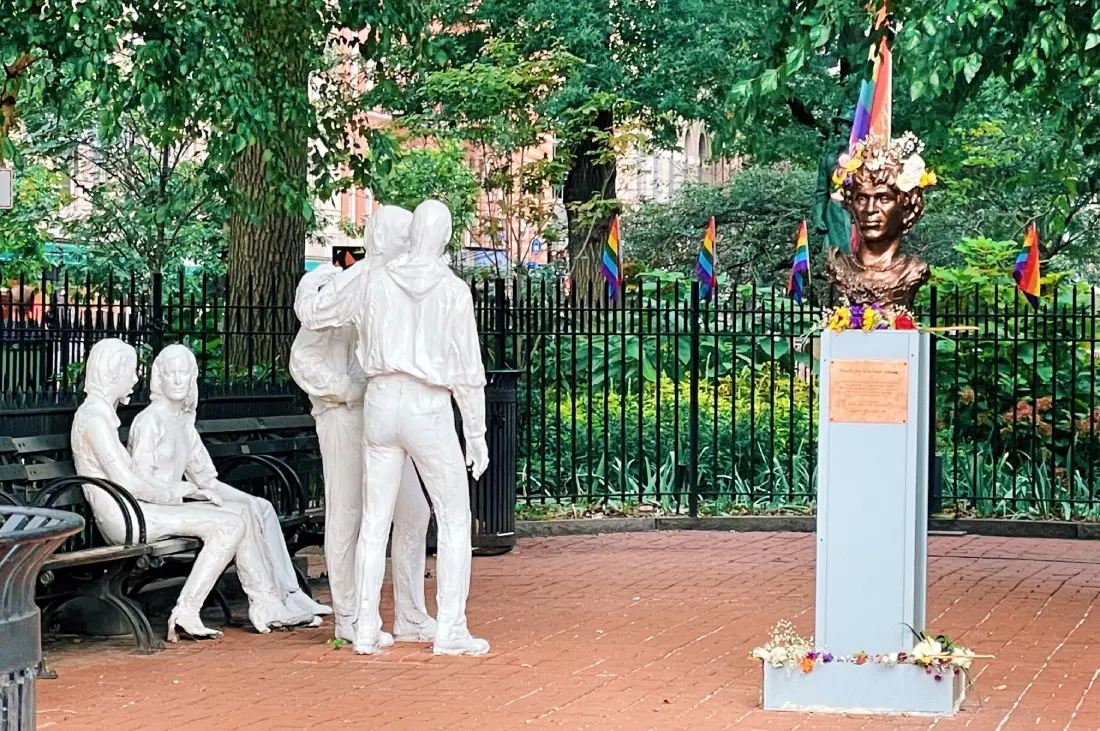
#2 Homomonument – Amsterdam, Netherlands
Westermarkt, 1016 DV Amsterdam
Amsterdam’s Homomonument, shaped from three large pink granite triangles, is a powerful symbol of LGBTQ+ resilience and memory. Opened in 1987, it was the first memorial in the world to honor gay and lesbian people persecuted and murdered under National Socialism and to continue acknowledging contemporary injustices.
The three triangles each point to something significant: one to the Anne Frank House, one to the seat of the Dutch government, and one to the site of the LGBTQ+ organization COC. The layout represents past suffering, present pride, and future hope. We often spend time at the Homomonument during local events, whether solemn Remembrance Day gatherings or celebratory Amsterdam Pride festivities.
It’s a living part of Amsterdam, used by locals and visitors alike as a site of protest, joy, and reflection. Its canal-side location next to the Westerkerk church adds to its emotional gravity. Whether you sit, walk, or gather here, the symbolism is unmistakable. It reminds us that visibility matters and that history can be reclaimed and redefined. Definitely a go-to place in the Dutch capital city.
Learn more about Homomonument right next to Pink Point Amsterdam here
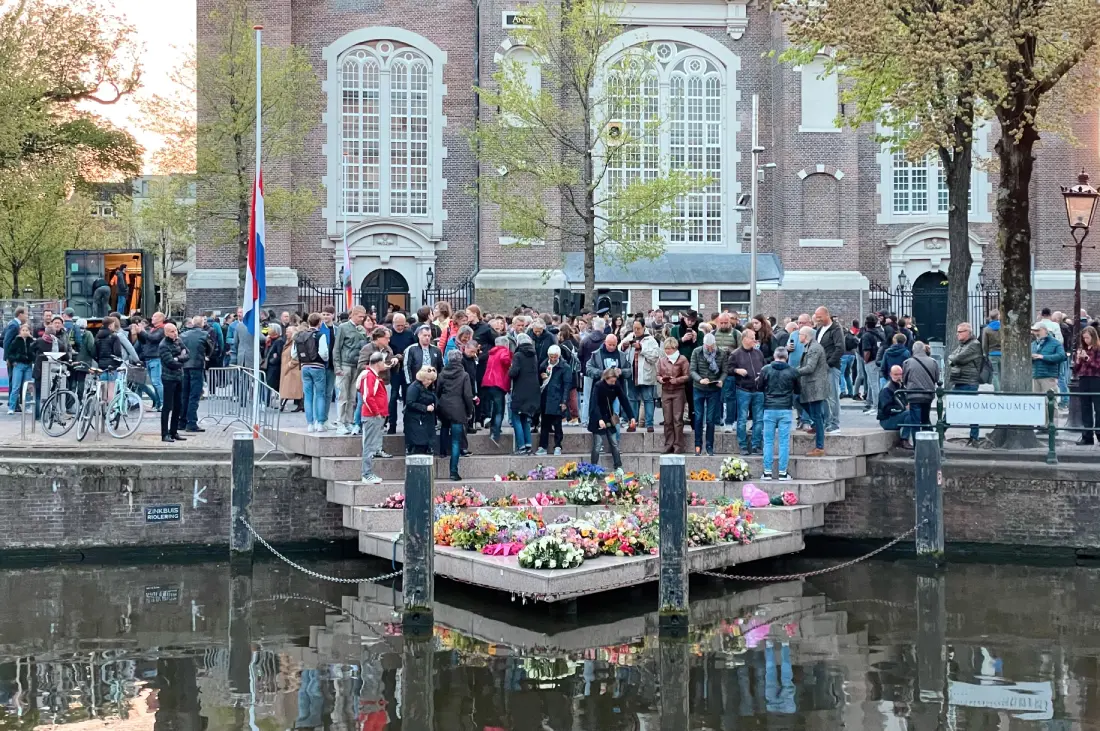
#3 Memorial For Homosexuality – Berlin, Germany
Tiergarten, Ebertstraße 10117 Berlin
Located in Berlin‘s Tiergarten Park near the Brandenburg Gate, this minimalist memorial opened in 2008 to commemorate LGBTQ+ people persecuted under the Nazi regime. It stands in sober contrast to the larger Holocaust Memorial nearby but serves an equally important role in bearing witness to queer suffering and resistance.
Designed by Michael Elmgreen and Ingar Dragset, the LGBTQ+ monument in Berlin is a concrete slab with a small window that displays a film of same-sex couples kissing. It invites reflection AND discomfort, which is precisely the point. The site challenges us to look, remember, and not turn away.
When we visited during a cold spring morning, we saw fresh flowers left by visitors, subtle acts of remembrance. The memorial is a poignant space for reflection and a crucial reminder that LGBTQ+ people were also victims of systematic extermination. While small in scale, its message is vast: our stories deserve to be told, our suffering deserves to be acknowledged, and our love endures.It was one of the most emotionally charged stops on our journey through queer history in Berlin.
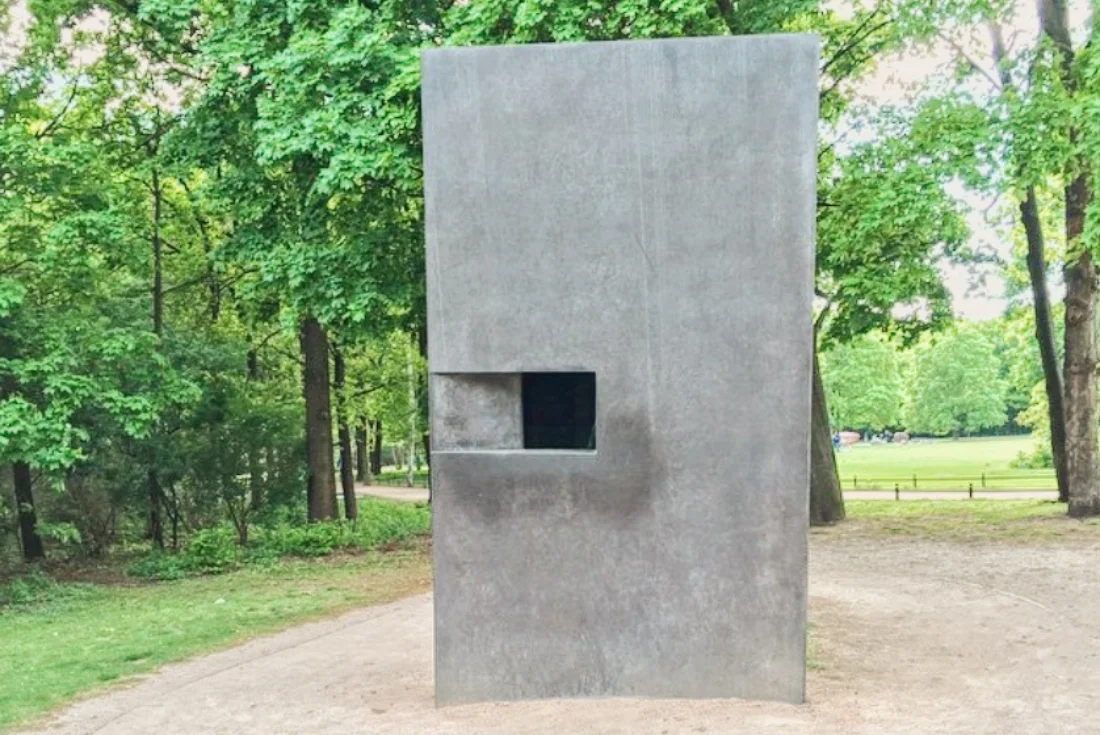
Reading tip: LGBTQ+ Glossary: Understanding Queer Terminology with Respect and Pride
#4 National AIDS Memorial – San Francisco, USA
Nancy Pelosi Drive & Bowling Green Dr, San Francisco, CA 94122, USA
San Francisco’s National AIDS Memorial Grove is a deeply spiritual and healing space located in Golden Gate Park. It was created to honor the lives lost during the HIV/AIDS epidemic and the resilience of those who fought through it. It’s also a site for hope, remembrance, and education.
We visited on a foggy morning during our road trip around California and the southwestern USA. We walked the winding paths lined with trees, engraved stones, and benches where people have sat to grieve, remember, or simply be still. The Circle of Friends, etched with the names of thousands of those lost, is haunting and beautiful at the same time.
This sacred ground – known as “the Grove” – holds significance for many queer people, having been initiated by a grassroots movement of survivors, friends, and activists in the early 1990s. It was later designated as a federally recognized memorial in 1996. Annual events, such as World AIDS Day, are hosted here, featuring storytelling, music, and shared moments of reflection. For us, this grove is a must-visit not just because of its beauty, but because of the legacy it carries. LGBTQ+ history is also about loss, activism, and the pursuit of healing.
#5 The Legacy Walk – Chicago, USA
North Halsted Street, Chicago, USA
Stretching along North Halsted Street in Chicago’s Boystown neighborhood, The Legacy Walk is a unique outdoor LGBTQ+ history exhibit, he first of its kind in the world. The walk features a series of bronze plaques mounted on 25-foot-tall rainbow-colored pylons, each telling the story of a key LGBTQ+ figure in global queer history. We spent an entire afternoon reading each plaque, moved by names we knew –Harvey Milk, Audre Lorde, Bayard Rustin – and others we were encountering for the first time. It’s like an open-air museum that educates and empowers through public storytelling.
Launched in 2012, the project continues to expand, celebrating diversity and inclusion in the most accessible way possible. What we love about the Legacy Walk is that it transforms everyday public space into something meaningful and educational. Surrounded by queer cafés, bookstores, and bars, it’s easy to turn a walk through Boystown into a full day of exploration. The energy is uplifting, and you leave feeling both humbled and proud.
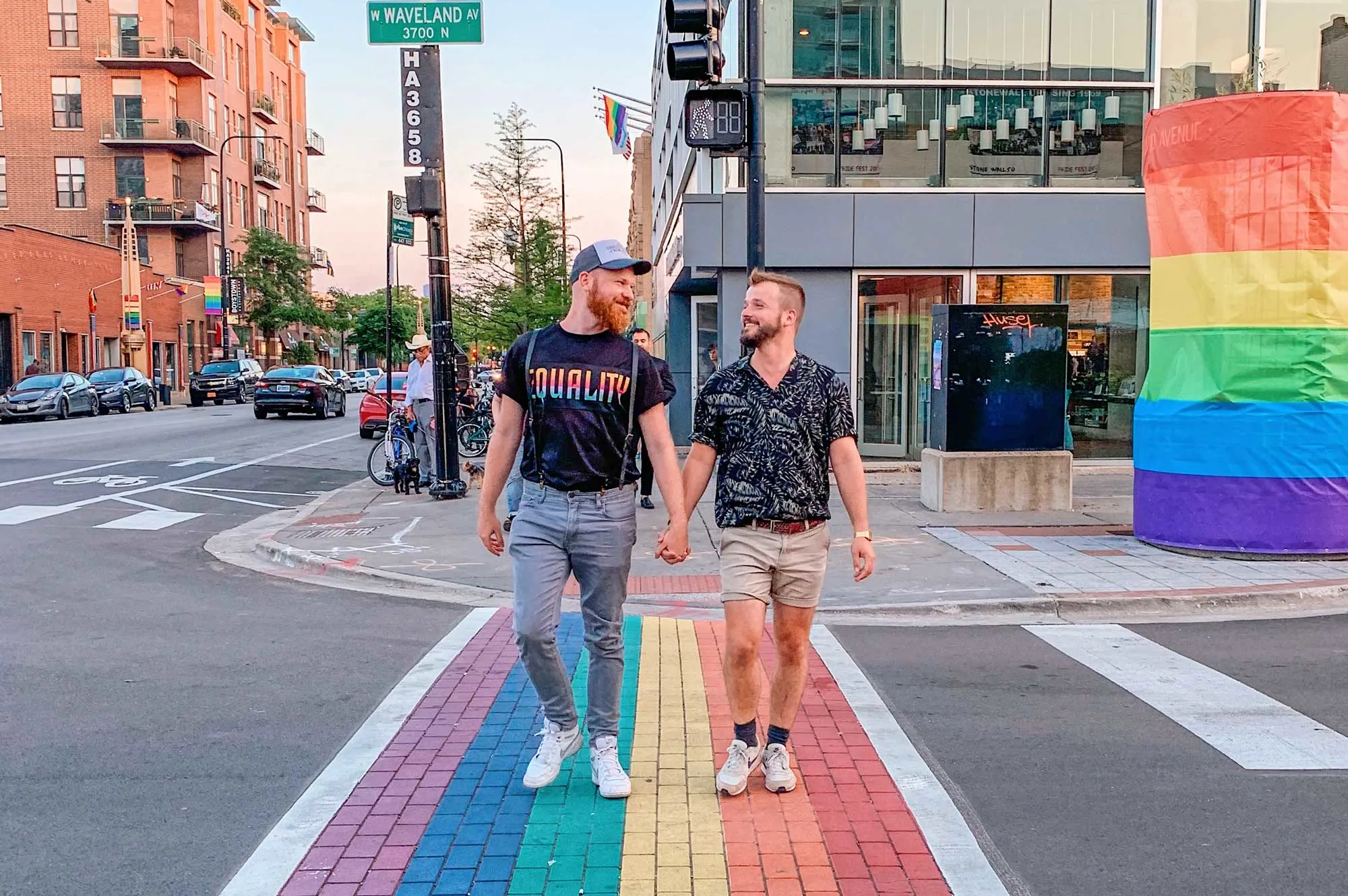
#6 Alan Turing Memorial – Manchester, United Kingdom
Fairfield St Manchester, England, M1 3HB United Kingdom
In the heart of Manchester’s Gay Village, you’ll find Sackville Gardens, a quiet green space home to the Alan Turing Memorial, a statue of Alan Turing. The statue was unveiled in 2001 and remains one of the most visited queer landmarks in the UK. This memorial honors the brilliant mathematician and World War II codebreaker who played a pivotal role in defeating the Nazis, yet was later prosecuted for being gay.
The life-sized bronze sculpture shows Turing sitting on a bench, holding an apple in one hand. The apple symbolizes both his scientific legacy and the tragic end of his life. He died by cyanide poisoning in what many believe was suicide, following state-imposed chemical castration. Standing beside this statue was profoundly moving. Alan Turing’s story is one of both genius and injustice, and can be considered a reminder of how far we’ve come and how far we still need to go. Nearby, plaques provide historical context about his achievements and the persecution he faced. It’s an essential stop for anyone interested in LGBTQ+ history, technology, or the power of resilience.
#7 Oscar Wilde Memorial Sculpture – Dublin, Ireland
Merrion Square, Dublin, Ireland
Tucked inside Merrion Square in Dublin lies a wonderfully irreverent and poetic tribute to Oscar Wilde, celebrated playwright, wit, and LGBTQ+ icon. The memorial of Oscar Wilde consists of three statues: one of Wilde himself reclining on a granite rock and two pillars inscribed with his witticisms and quotes from contemporary admirers.
As fans of queer literature and Irish history, we are thrilled to visit. Wilde’s expression, carved in stone, radiates charm, defiance, and intellect. Unveiled in 1997, the installation captures not only his literary genius but also his suffering as he was imprisoned for his sexuality and died in exile.
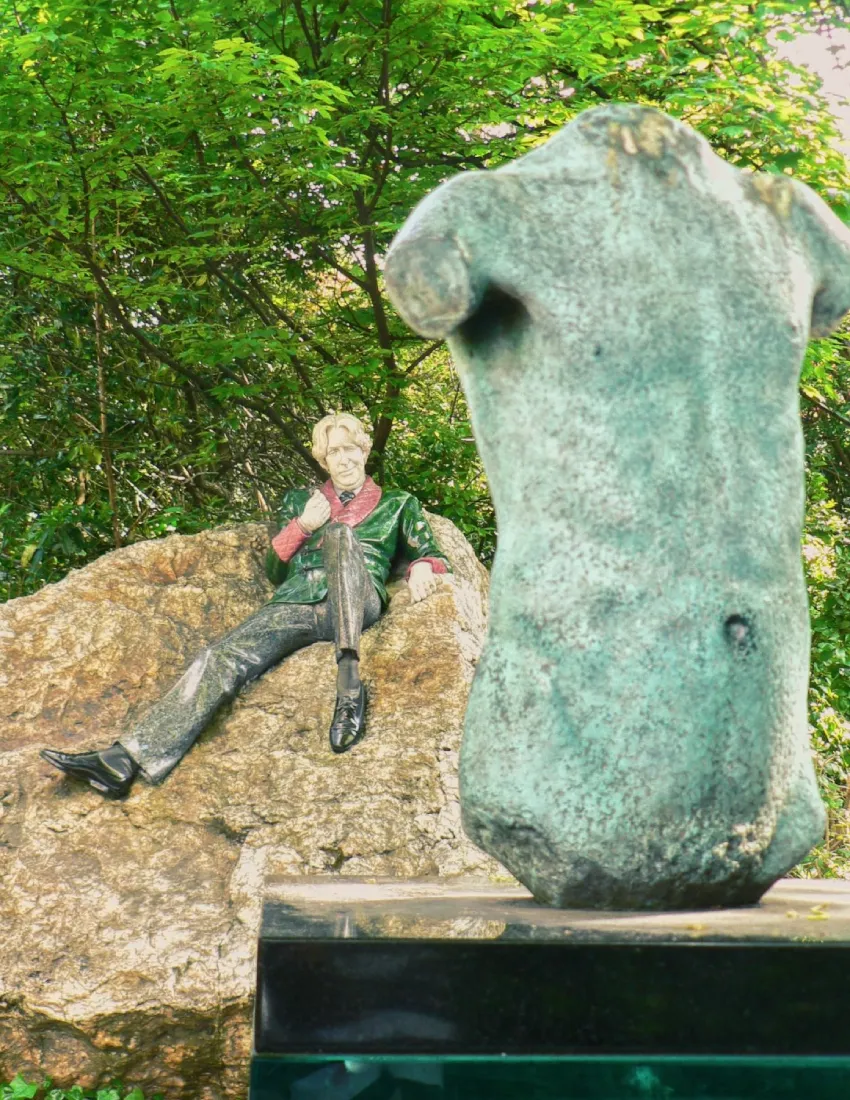
What makes this monument special is its balance of playfulness and gravity. Visitors are encouraged to sit on nearby benches, take in the sculpture, and reflect on the intersection of art, identity, and resistance. The site is often quiet—ideal for introspection or a romantic stroll. For LGBTQ+ travelers, it’s a chance to connect with one of the most complex and influential figures in our shared history.
#8 Toilet house “The Pissoir” – Munich, Germany
At Holzplatz in Munich, what was once a run-down public restroom has become one of the city’s most colorful and unexpected tributes to LGBTQ+ history. Known affectionately as “The Pissoir” this street-art installation features large graffiti portraits of queer icons like Freddie Mercury, Fassbinder, and Einstein.
The idea was conceived by local artist Martin Arz and café-bar owner Thomas Zufall, who sought to reclaim urban space for queer visibility. With support from the city and the street art group Graphism, the project turned into a vivid declaration of identity, pride, and public memory.

We stumbled upon it on our way to a nearby gay bar and were instantly captivated. It’s not your typical memorial; it’s raw, edgy, and bold. And that’s precisely what makes it powerful. It celebrates LGBTQ+ life in all its colors, outside the solemn confines of traditional monuments. It’s a must-see for those who enjoy urban exploration of the German city Munich while being curious about how queer history can thrive in everyday spaces. And yes, Freddie’s mustache is glorious in spray paint!
#9 Memorial to Gay Holocaust Victims – Tel Aviv, Israel
Aluf Albert Mendler St 8, Tel Aviv-Yafo, Israel
In 2013, Tel Aviv unveiled its first LGBTQ+ memorial, honoring LGBTQ+ victims of the Holocaust. It is Israel’s first memorial to commemorate Jewish and non-Jewish victims. Located outside the LGBTQ+ Community Center in Gan Meir, the memorial features three pink benches arranged in a triangle, symbolizing the reclaimed pink triangle. The benches of the LGBTQ+ monument in Tel Aviv are engraved in Hebrew, English, and German with the inscription: “In memory of those persecuted by the Nazi regime for their sexual orientation and gender identity.”
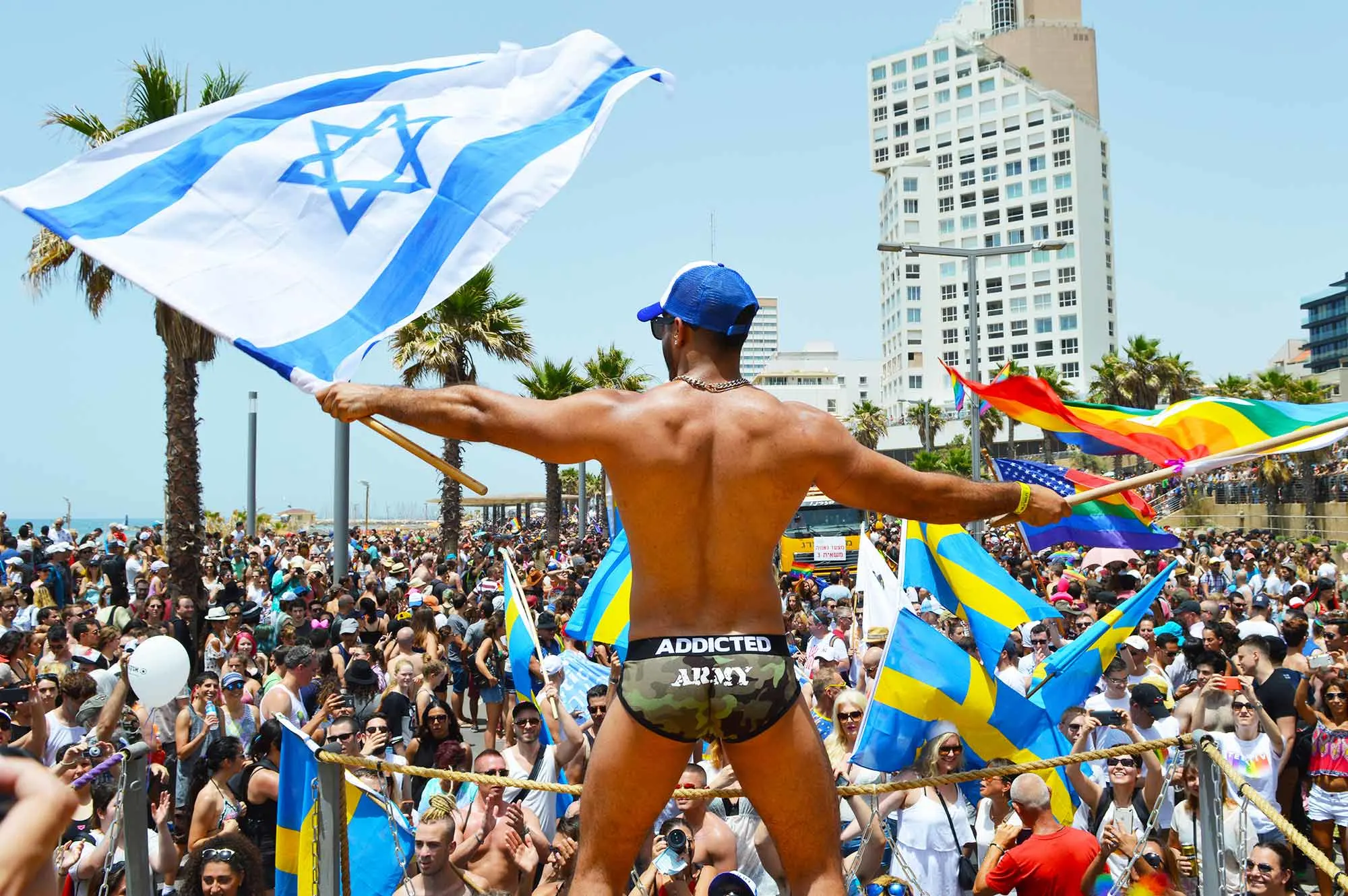
#10 Anthony Goicolea’s LGBTQ+ Memorial – New York, USA
New York City, New York 10014, USA (between W 12 Street and Bethune Street)
Along the Hudson River in New York City, a newer and more unconventional LGBTQ+ memorial offers a contemplative respite from the urban rush. Created by Cuban-American artist Anthony Goicolea in 2018, the design features glass disks embedded in large boulders. As light hits them, rainbow reflections shimmer across the grass.
Commissioned after the 2016 Pulse Nightclub massacre in Orlando, this installation honors victims of hate and violence while offering a message of peace, resilience, and community unity. We sat on a nearby bench, quietly watching the changing light patterns. The effect is subtle but deeply moving. It’s the kind of place that doesn’t shout—but speaks clearly if you listen.
Unlike many other monuments, this New York LGBTQ+ monument seamlessly blends into the park, making it an ideal location for both solitary reflection and community gatherings.
#11 Gay and Lesbian Holocaust Memorial – Sydney, Australia
301 Victoria St, Darlinghurst NSW 2010, Australia
In the heart of Darlinghurst’s Green Park near Sydney’s Oxford Street, the striking Gay and Lesbian Holocaust Memorial honors LGBTQ+ victims of Nazi and Soviet persecution. A triangular prism intersects with black steel columns, creating a fractured Star of David. By day, it reflects sunlight. By night, it glows softly, symbolizing remembrance and hope.
Commissioned in 1991, this was one of the world’s first queer Holocaust memorials. It continues to serve as a site of remembrance, education, and community engagement. Friends of ours visited the LGBTQ+ memorial at dusk. A few others stood nearby, some lighting candles, others simply pausing. The silence must have been heavy, but calmingly strong.
This place radiates a kind of sacred energy you can feel. The monument is often used during World AIDS Day and Holocaust Remembrance Day ceremonies. It’s an anchor for Sydney’s LGBTQ+ community, reminding us how challenging our past as queer individuals has been.
#12 Plaza de la Diversidad Sexual – Montevideo, Uruguay
11000 Montevideo, Departamento de Montevideo, Uruguay
In Montevideo’s Old Town, a triangle-shaped monolith made of granite marks the Plaza de la Diversidad Sexual (Plaza of Sexual Diversity), Latin America’s first public space dedicated to LGBTQ+ inclusion. It was inaugurated in 2004 after eight LGBTQ+ organizations joined forces with the city government to create the initiative.
The inscription reads: “Honrar la diversidad es honrar la vida” (“To honor diversity is to honor life”), expressing a commitment to equality and human rights for all sexualities and gender identities. The monument isn’t flashy, but its symbolism is powerful. Located near cafés, shops, and historic streets, it has been received as quite revolutionary, asserting a presence in a continent still facing LGBTQ+ discrimination.
The plaza often hosts Pride events and community gatherings, making it both a landmark and a meeting point for queer activism in Uruguay.
#13 Pink Triangle Park and Memorial – San Francisco, USA
2454 Market St, San Francisco, CA 94114, USA
Across from Harvey Milk Plaza, the Pink Triangle Park and Memorial is small but has a profound emotional impact. The triangle-shaped space by artists Robert Bruce and Susan Martin contains 15 granite pylons, each representing 1,000 of the 15,000 total LGBTQ+ victims of the Nazi regime. The use of pink granite reflects the reclaimed pink triangle, now a symbol of pride and resistance. The park is intimate and quiet.
We visited during a self-guided queer history tour and found it to be one of the most sobering yet beautiful stops on the tour. There’s a plaque with historical context, benches for reflection, and crushed pink quartz at the triangle’s heart. The park faces the Castro MUNI station, where you’ll see the rainbow flag flying high. It creates a powerful contrast between mourning and celebration, past trauma and ongoing pride. Whether you’re exploring Castro or following in the footsteps of Harvey Milk, this is a place to pause, reflect, and honor.
Pride and Rainbow benches are LGBTQ+ Monuments
Another visual and monumental statements LGBTQ+ travelers will encounter around the globe are the colorful rainbow benches. The symbols of LGBTQ+ pride and inclusivity in public spaces. These colorful installations create safe and welcoming areas for people of diverse sexual orientations and gender identities. They represent resilience and progress in the fight for LGBTQ+ rights, serving as gathering points for community events and celebrations.
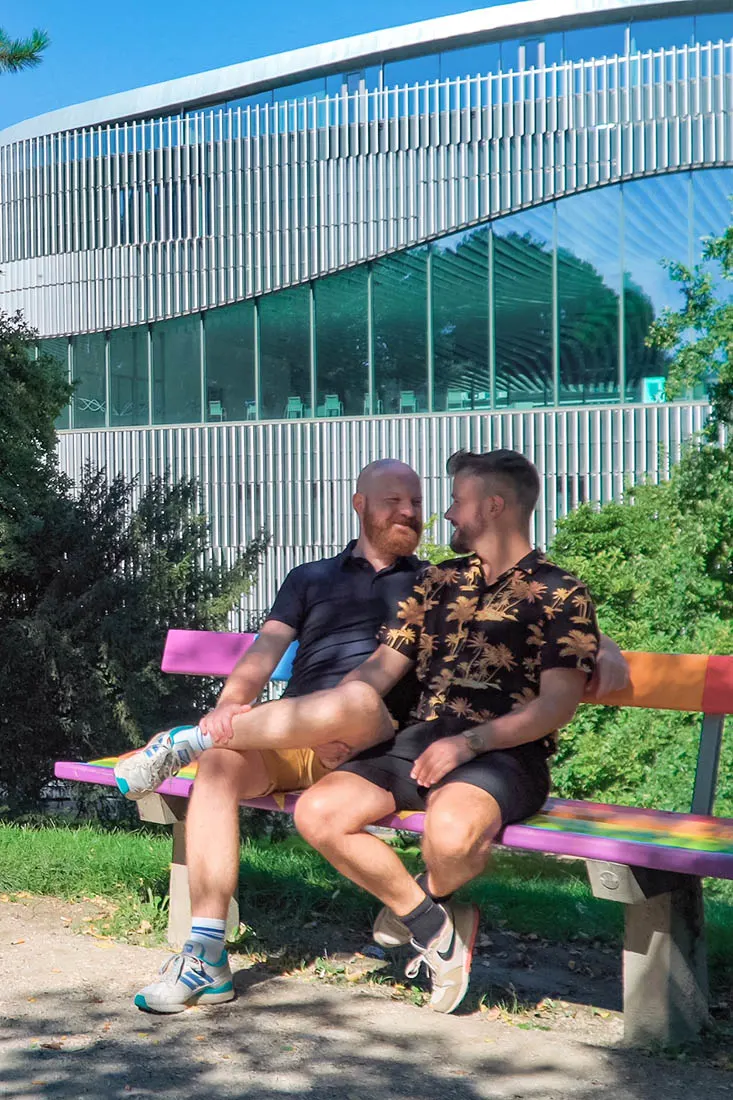
Rainbow benches send a powerful message of acceptance, love, and understanding to all who encounter them. For many LGBTQ+ people, they inspire hope and remind us of the ongoing work toward equality. By incorporating rainbow benches into public spaces, communities demonstrate their commitment to inclusivity and foster a sense of belonging for LGBTQ+ individuals. These benches play a crucial role in cultivating a more tolerant and diverse society.
Pride Travel Tips:
- Gay Pride Parades & CSD in Germany in an overview
- Overview: Our best Gay Pride Trips around the world
- Tested: All Gay- und LGBTQ+ friendly Hotels worldwide
FAQ – LGBTQ+ Monuments & Gay Travel
LGBTQ+ monuments are public memorials that commemorate the history, struggles, and contributions of LGBTQ+ individuals and communities. They serve as powerful symbols of visibility, resistance, and celebration of queer identity.
For queer travelers like us, visiting LGBTQ+ monuments is both educational and emotional. These sites offer a way to connect with local queer history and honor those who paved the way for rights and acceptance.
The Stonewall National Monument in New York City is arguably the most recognized worldwide, marking the start of the modern LGBTQ+ rights movement after the Stonewall Riots, also known as the Stonewall Uprising.
Yes, places like Montevideo (Plaza de la Diversidad Sexual) and Australia have meaningful LGBTQ+ memorials that highlight global queer history.
By being located in public spaces, these monuments promote awareness, spark conversations, and create safe and inclusive environments for LGBTQ+ individuals.
Originally used by the Nazis to identify homosexual prisoners, the pink triangle has been reclaimed by the LGBTQ+ community as a symbol of resistance and remembrance.
Yes. The National AIDS Memorial in San Francisco is a notable example that honors those lost during the HIV/AIDS epidemic.
Absolutely. Many queer travel guides and city walking tours include stops at LGBTQ+ monuments for cultural and historical context. We recommend asking your guide to point out important historic places for the queer community, be it during an LGBTQ+ city tour or not.
Yes. The Alan Turing Memorial in Manchester and the Oscar Wilde Memorial in Dublin, for example, honor two influential queer figures in history.
You can support visibility by sharing your experiences, educating others about the history, donating to preservation projects, and attending commemorations respectfully.
Now it is your turn to visit these remarkable LGBTQ+ Monuments around the world
These 13 LGBTQ+ monuments and their global cousins, like rainbow benches, aren’t just destinations. They are sites of memory, resistance, and celebration. Whether you’re exploring queer history, honoring community trauma, or finding your place in a shared legacy, these monuments offer something meaningful.
Which one of the LGBTQ+ monuments and memorials is on your gay travel bucket list for this year? And: Which Pride parades are you visiting, demonstrating equal rights for the LGBTQ+ community?
Do you like it? PIN IT!
Want to learn more about travel news from the LGBTQ+ community? Follow us on Instagram, Threads, YouTube, and Facebook! See you at a Pride or CSD march somewhere in this beautiful, diverse, and colorful world!
Karl & Daan.


